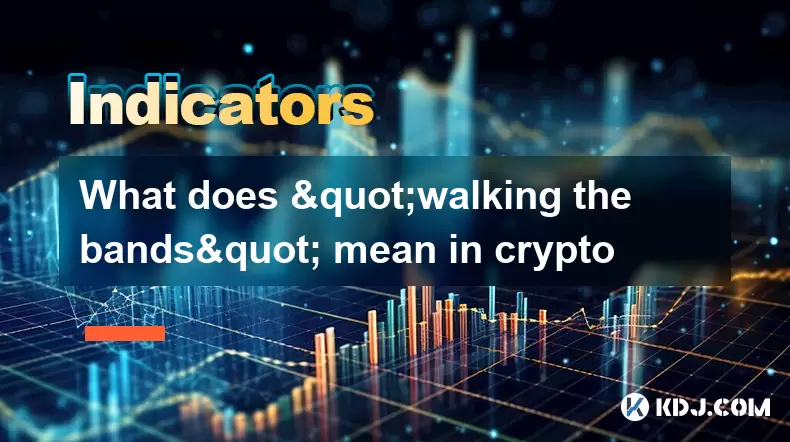-
 Bitcoin
Bitcoin $118100
-0.44% -
 Ethereum
Ethereum $3585
5.43% -
 XRP
XRP $3.434
5.65% -
 Tether USDt
Tether USDt $1.000
0.02% -
 BNB
BNB $743.8
3.89% -
 Solana
Solana $178.7
3.84% -
 USDC
USDC $1.000
0.03% -
 Dogecoin
Dogecoin $0.2381
12.81% -
 TRON
TRON $0.3270
3.62% -
 Cardano
Cardano $0.8315
4.93% -
 Hyperliquid
Hyperliquid $44.51
-4.42% -
 Stellar
Stellar $0.4710
1.52% -
 Sui
Sui $3.896
-2.51% -
 Chainlink
Chainlink $18.09
6.98% -
 Hedera
Hedera $0.2681
9.31% -
 Bitcoin Cash
Bitcoin Cash $516.7
4.83% -
 Avalanche
Avalanche $23.95
6.96% -
 Shiba Inu
Shiba Inu $0.00001490
5.67% -
 UNUS SED LEO
UNUS SED LEO $8.966
0.80% -
 Toncoin
Toncoin $3.294
4.39% -
 Litecoin
Litecoin $105.4
4.69% -
 Polkadot
Polkadot $4.356
5.30% -
 Uniswap
Uniswap $10.29
17.25% -
 Monero
Monero $327.9
-3.04% -
 Bitget Token
Bitget Token $4.942
4.33% -
 Ethena USDe
Ethena USDe $1.001
0.08% -
 Pepe
Pepe $0.00001348
2.17% -
 Dai
Dai $1.000
0.02% -
 Aave
Aave $320.8
0.58% -
 Bittensor
Bittensor $411.8
-4.07%
What does "walking the bands" mean in crypto
In crypto trading, "walking the bands" describes price hugging Bollinger Bands, signaling strong trends but requiring confirmation from other indicators for reliable trading decisions.
Jul 16, 2025 at 04:28 pm

Understanding the Term "Walking the Bands" in Cryptocurrency Trading
In the realm of cryptocurrency trading, "walking the bands" refers to a specific trading strategy or behavior observed when price action interacts with technical indicators like Bollinger Bands. This phrase is commonly used among traders who rely on technical analysis to make informed decisions about entering or exiting trades.
Bollinger Bands are one of the most widely used tools in crypto trading. They consist of a moving average line (middle band) and two outer bands that represent standard deviations above and below the moving average. When the price of a cryptocurrency moves along these upper or lower bands repeatedly, it's often described as "walking the bands."
How Does Walking the Bands Manifest on Price Charts?
When observing a candlestick chart overlaid with Bollinger Bands, "walking the bands" typically appears as a sustained trend where the price hugs either the upper or lower band for several periods. This phenomenon may indicate a strong uptrend or downtrend depending on which band the price is touching.
- Upper band walking: Suggests bullish momentum, where buyers continue to push prices higher.
- Lower band walking: Indicates bearish pressure, where sellers dominate and drive the price down consistently.
Traders interpret this behavior differently. Some see it as a continuation signal, while others view it as a potential overbought or oversold condition depending on market context.
Why Do Traders Pay Attention to This Phenomenon?
Traders monitor "walking the bands" because it can provide insights into market sentiment and potential reversals or continuations. When the price walks the upper band, it may suggest that the asset is in a strong uptrend and could continue rising. Conversely, if the price walks the lower band, it might signal a prolonged downtrend.
However, experienced traders know that this behavior alone isn't sufficient to make trading decisions. It must be combined with other indicators such as RSI, MACD, or volume to confirm strength or weakness.
What Are Common Misinterpretations of Walking the Bands?
One common mistake is assuming that price hugging the upper band always signals overbought conditions, prompting premature sell decisions. Similarly, some traders assume that the price clinging to the lower band means it's oversold and due for a rebound, leading to risky buy attempts.
These assumptions can be misleading without proper confirmation from other tools. For instance:
- High volume during upper band walking might indicate strong buying interest rather than an overbought scenario.
- Low volume during lower band walking might suggest lack of buyer support, reinforcing a downtrend.
It's essential to avoid making isolated judgments based solely on "walking the bands" without considering broader market dynamics.
How Can You Incorporate Walking the Bands Into Your Trading Strategy?
To effectively use this concept, follow these steps:
- Identify trending markets: Apply Bollinger Bands to your preferred time frame and look for consistent touches on either the upper or lower band.
- Confirm with volume: Check whether the volume increases during each touch to validate the strength of the trend.
- Use additional indicators: Overlay RSI or MACD to identify potential divergences or confirm trend continuation.
- Set realistic entry points: Don’t enter immediately upon seeing the first touch; wait for confirmation through multiple touches or candlestick patterns.
- Place stop-loss orders wisely: Since price can remain near the band for extended periods, ensure your stop-loss isn’t too tight and allows for normal volatility.
By combining these elements, you can create a more robust trading strategy that leverages "walking the bands" without falling into false signals.
Can Walking the Bands Be Applied Across Different Time Frames?
Yes, "walking the bands" can appear on any time frame, from 1-minute charts to weekly charts. However, the reliability of the pattern varies across different intervals:
- Short-term charts (e.g., 5m, 15m): These often show frequent band touches but are prone to noise and fakeouts.
- Medium-term charts (e.g., 1h, 4h): Provide clearer trend signals and are often used by day traders.
- Long-term charts (e.g., daily, weekly): Show significant trends and are preferred by swing traders and investors.
Each trader should test this behavior across various time frames using historical data before applying it in live trading environments.
Frequently Asked Questions
Q: Is walking the bands a reliable indicator for predicting price reversals?
A: No, "walking the bands" should not be used alone to predict reversals. It needs to be confirmed with other tools like volume, RSI, or candlestick patterns.
Q: What happens when the price walks both bands alternately?
A: If the price switches between upper and lower bands frequently, it usually indicates high volatility and a lack of clear trend direction, suggesting a sideways or choppy market.
Q: Should I adjust Bollinger Band settings when observing walking the bands?
A: Standard settings (20-period SMA and 2 standard deviations) are generally sufficient. Adjustments may be made based on personal preference or specific market conditions, but consistency is key.
Q: Can walking the bands occur during low liquidity periods?
A: Yes, especially in altcoins or less traded tokens. During low liquidity, price can spike quickly and hug the bands temporarily, creating misleading signals.
Disclaimer:info@kdj.com
The information provided is not trading advice. kdj.com does not assume any responsibility for any investments made based on the information provided in this article. Cryptocurrencies are highly volatile and it is highly recommended that you invest with caution after thorough research!
If you believe that the content used on this website infringes your copyright, please contact us immediately (info@kdj.com) and we will delete it promptly.
- Dogwifhat, Pepe, and Altcoin 2025: Meme Coin Mania or Real Utility?
- 2025-07-19 02:50:13
- Bitcoin: From Niche Crypto to Global Asset Dominating Crypto Finance
- 2025-07-19 02:50:13
- Coinbase System Upgrade: What It Means for Your Crypto
- 2025-07-19 02:30:13
- Riding the Crypto Whale: Bitcoin, Altcoins, and the $5 Trillion Dream
- 2025-07-19 02:30:13
- Bitcoin Core's Disk Fill Bug: Finally Squashed?
- 2025-07-19 02:35:13
- Coinbase (COIN) Soars to All-Time High: What's Next?
- 2025-07-19 00:30:12
Related knowledge

Advanced RSI strategies for crypto
Jul 13,2025 at 11:01am
Understanding the Basics of RSI in Cryptocurrency TradingThe Relative Strength Index (RSI) is a momentum oscillator used to measure the speed and chan...

Crypto RSI for day trading
Jul 12,2025 at 11:14am
Understanding RSI in the Context of Cryptocurrency TradingThe Relative Strength Index (RSI) is a momentum oscillator used to measure the speed and cha...

Crypto RSI for scalping
Jul 12,2025 at 11:00pm
Understanding RSI in the Context of Crypto TradingThe Relative Strength Index (RSI) is a momentum oscillator widely used by traders to measure the spe...

What does an RSI of 30 mean in crypto
Jul 15,2025 at 07:07pm
Understanding RSI in Cryptocurrency TradingRelative Strength Index (RSI) is a momentum oscillator widely used in cryptocurrency trading to measure the...

What does an RSI of 70 mean in crypto
Jul 13,2025 at 06:07pm
Understanding the RSI Indicator in Cryptocurrency TradingThe Relative Strength Index (RSI) is a widely used technical analysis tool that helps traders...

Does RSI work in a bear market for crypto
Jul 16,2025 at 01:36pm
Understanding RSI in Cryptocurrency TradingThe Relative Strength Index (RSI) is a momentum oscillator used by traders to measure the speed and change ...

Advanced RSI strategies for crypto
Jul 13,2025 at 11:01am
Understanding the Basics of RSI in Cryptocurrency TradingThe Relative Strength Index (RSI) is a momentum oscillator used to measure the speed and chan...

Crypto RSI for day trading
Jul 12,2025 at 11:14am
Understanding RSI in the Context of Cryptocurrency TradingThe Relative Strength Index (RSI) is a momentum oscillator used to measure the speed and cha...

Crypto RSI for scalping
Jul 12,2025 at 11:00pm
Understanding RSI in the Context of Crypto TradingThe Relative Strength Index (RSI) is a momentum oscillator widely used by traders to measure the spe...

What does an RSI of 30 mean in crypto
Jul 15,2025 at 07:07pm
Understanding RSI in Cryptocurrency TradingRelative Strength Index (RSI) is a momentum oscillator widely used in cryptocurrency trading to measure the...

What does an RSI of 70 mean in crypto
Jul 13,2025 at 06:07pm
Understanding the RSI Indicator in Cryptocurrency TradingThe Relative Strength Index (RSI) is a widely used technical analysis tool that helps traders...

Does RSI work in a bear market for crypto
Jul 16,2025 at 01:36pm
Understanding RSI in Cryptocurrency TradingThe Relative Strength Index (RSI) is a momentum oscillator used by traders to measure the speed and change ...
See all articles

























































































